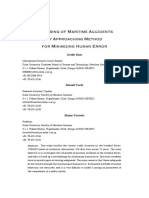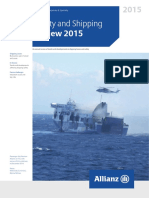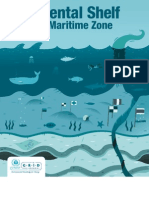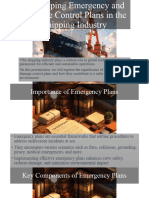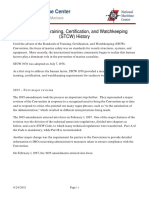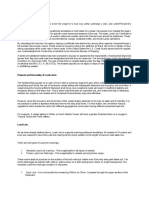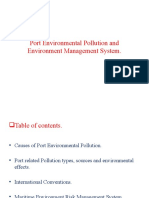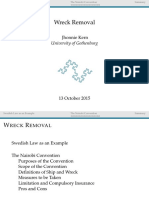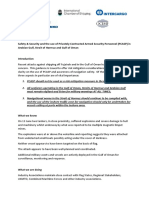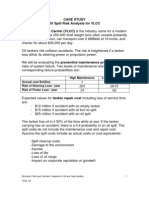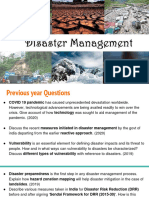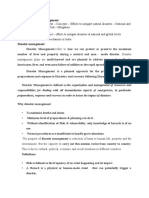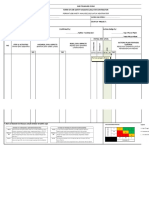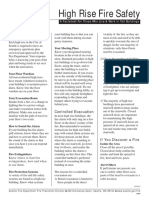0% found this document useful (0 votes)
194 views6 pagesDisaster Management Guide
There are two main types of disasters: natural disasters caused by natural hazards like earthquakes, floods, or cyclones, and man-made disasters caused by human activities like industrial accidents, terrorism, or warfare. Disaster management involves preparing for disasters through prevention and mitigation efforts, responding during disasters through rescue and relief, and recovering after disasters through rehabilitation and reconstruction to reduce future risks. The key stages of disaster management are preparedness, response, recovery, and mitigation.
Uploaded by
Archie AndrewsCopyright
© © All Rights Reserved
We take content rights seriously. If you suspect this is your content, claim it here.
Available Formats
Download as DOCX, PDF, TXT or read online on Scribd
0% found this document useful (0 votes)
194 views6 pagesDisaster Management Guide
There are two main types of disasters: natural disasters caused by natural hazards like earthquakes, floods, or cyclones, and man-made disasters caused by human activities like industrial accidents, terrorism, or warfare. Disaster management involves preparing for disasters through prevention and mitigation efforts, responding during disasters through rescue and relief, and recovering after disasters through rehabilitation and reconstruction to reduce future risks. The key stages of disaster management are preparedness, response, recovery, and mitigation.
Uploaded by
Archie AndrewsCopyright
© © All Rights Reserved
We take content rights seriously. If you suspect this is your content, claim it here.
Available Formats
Download as DOCX, PDF, TXT or read online on Scribd
/ 6
